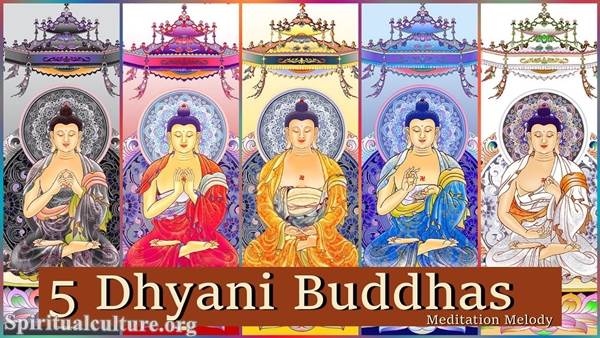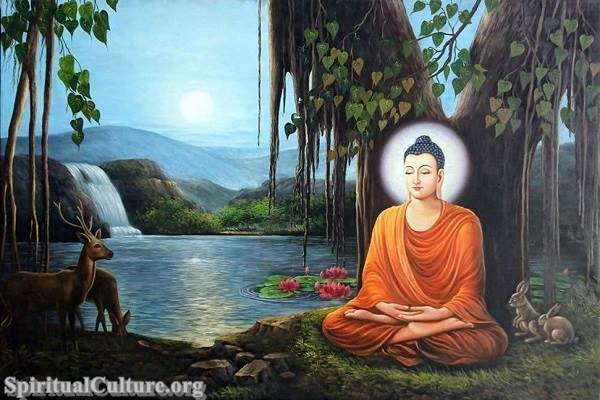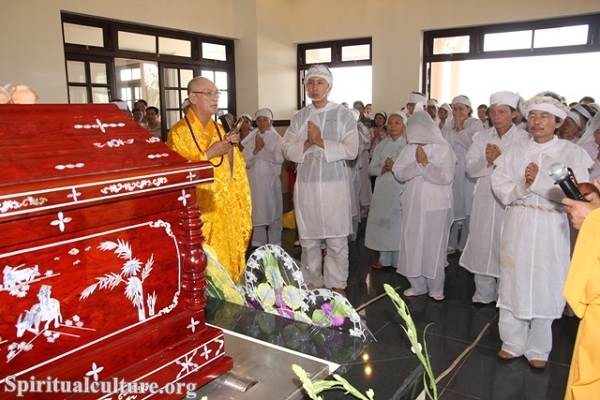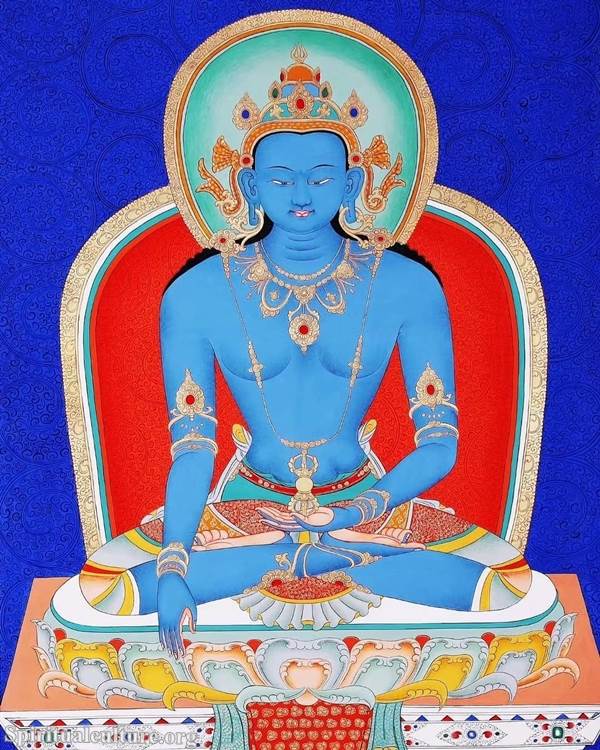They represent the five aspects of the enlightened mind and the five qualities of the Buddha nature that exist within all beings. The five Dhyani Buddhas are Vairochana, Akshobhya, Ratnasambhava, Amitabha, and Amoghasiddhi.
Each Dhyani Buddha is associated with a specific color, element, symbol, and direction, and they are often depicted in works of art and worshipped in temples.

In Tibetan Buddhist practices, the Dhyani Buddhas are often visualized and meditated upon as a way to cultivate the qualities they represent and to purify negative states of mind. The five Dhyani Buddhas are also considered to be emanations of the historical Buddha, Shakyamuni, who represents the ultimate spiritual attainment and wisdom.
In addition to serving as a spiritual path, the Dhyani Buddhas are also associated with specific physical, emotional, and psychological ailments and can be invoked for healing. Each Dhyani Buddha is associated with a particular negative state of mind and has the power to transform that state into its opposite.
Overall, the Dhyani Buddhas are an important aspect of Tibetan Buddhist tradition and offer a rich and intricate system of teachings on the nature of the mind, the path to enlightenment, and the relationship between one’s own mind and the world.




